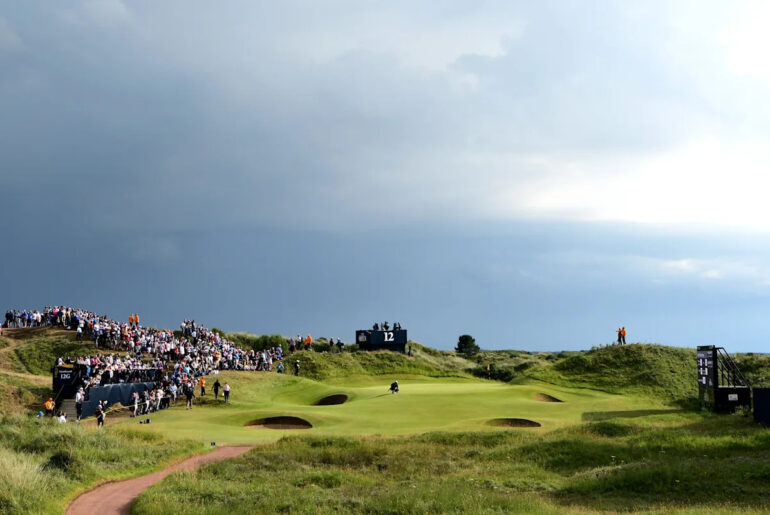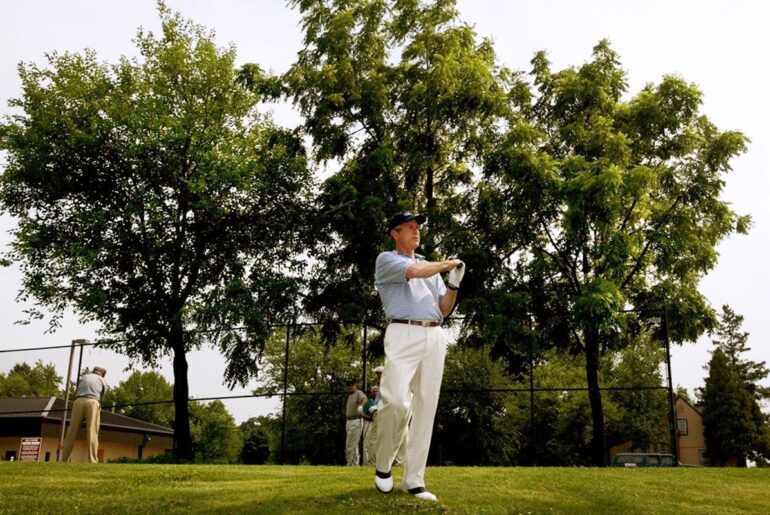“Links golf” is a term we hear often but seldom fully understand. It refers specifically to golf played on “links land,” a very particular type of terrain. The word links comes from the Old Scottish term hlinc, meaning rising ground or ridge, and it describes coastal land characterized by dunes, an undulating surface, and tightly packed sandy soil. This soil is generally unsuitable for farming and supports only native grasses like fescue and hardy shrubs such as gorse.
The combination of these elements creates a firm, fast-playing turf unlike any other in the world. It’s not just a style of architecture or a minimalist aesthetic — true links turf is a naturally occurring phenomenon, and that’s what makes it so rare.
How rare? Incredibly. On the entire continent of North America, there are only five golf courses that meet the technical and literal definition of true links. That’s five out of roughly 16,000. It’s a shockingly small number, but it’s accurate.
Why the Confusion?
The misunderstanding stems from the word itself. In the U.S., when we see a flat, treeless layout with pot bunkers and little vegetation, we’re quick to call it a “links course.” But unless it sits on actual links land, it doesn’t qualify. At best, we might call it a “links-style” course but anything inland, regardless of how it looks, simply isn’t links.
The Links Game
Playing true links golf requires a different mindset and a different skill set. Shots are played more along the ground than through the air. The turf is firm, the bounce is unpredictable, and the lies are tight — sometimes alarmingly so. Unlike the lush, soft fairways found inland, where the ball sits up almost like it’s teed, links lies demand precision, compression, and creativity
If you’re faced with a bare or tight lie, do not try to “help” the ball into the air. Embrace the lower flight, strike down on it, and trust your contact. That’s links golf.
The Only Five True Links Courses in North America:
Bandon Dunes- Bandon Dunes Resort, OregonPacific Dunes – Bandon Dunes Resort, OregonOld Macdonald – Bandon Dunes Resort, OregonCabot Links – Cape Breton, Nova ScotiaCabot Cliffs – Cape Breton, Nova Scotia
Two interesting notes:
First, all five were developed by Mike Keiser, a former greeting card entrepreneur with an extraordinary vision for golf.
Second, many beloved courses are not on this list, including:
StreamsongSand HillsChambers BayPebble BeachSpanish BayKiawah Island
These are all magnificent courses, without question. Not being on the true links list doesn’t diminish them in any way. I’ve been fortunate to play each of the five links courses listed above, as well as most of the top 25 in the country. And while I personally favor links golf, the best course I’ve ever played — Cypress Point — is not a links course. It takes a back seat to none.
The Beauty of Golf
One of the things that makes golf so unique is that every course is different. Every round is a new experience, shaped by the land beneath your feet. No two are alike – a far cry from the uniformity of a basketball court, football field, or tennis court.
So the next time you hear someone call a course a “links,” you’ll know what to ask yourself:
Is it truly on links land – or just links in look? Maybe bring it up at the 19th hole — and maybe not to the developer.
Dennis Clark is a PGA Master Professional and seven-time PGA award winner, including Teacher of the Year and Golf Professional of the Year. Dennis is available for private instruction at Eagle Lakes Golf Club. He can be reached at 239-777-6043 or dennisclarkgolf@gmail.com.







